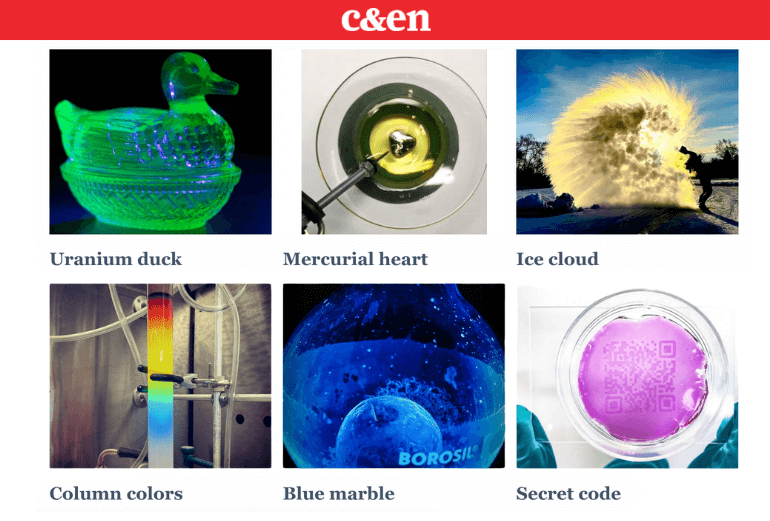Your company is launching an innovative new product that will simplify the job of a particular group of scientists. How do you promote your product to the right audience? Content marketing is undoubtedly an avenue to consider, as are social media campaigns. Another, often more precise area in which to focus your efforts is email newsletter advertising.
From C&EN’s Weekly Newsletter to the NYT’s Science Times and Evonik’s Personal Care Newsletter, there is no shortage of email newsletters serving the science community. By sponsoring or placing an ad in a scientific eNewsletter or eTOC, you can leverage the respect and expertise of these publications while reaching a highly engaged audience.
Why Science Email Newsletter Ads are Effective
The global revenue potential of email marketing is massive, with worldwide totals expected to reach $15.8 billion by 2026. Here are three reasons incorporating eNewsletters ads into your marketing strategy will help you tap into that revenue potential:
1. Science eNewsletter Audiences are Precise and Cultivated

HubSpot Research found subscriber segmentation to be the most effective strategy for email marketing campaigns. One significant advantage of email newsletter advertising is that publishers who create these eNewsletters do the heavy segmentation and targeting work for you.
Creating informative and exciting content for a newsletter is no easy feat. These newsletter creators want to ensure their content gets in front of the right audience, and they take ample care to clean and cultivate a distribution list. This thoughtful curation means more of the right people will see your message. Especially in niche industries such as specialty chemicals and pharmaceuticals, eNewsletters and eTOCs serve as a critical source for business news. The more niche and aligned the newsletter, the more valuable the audience.
2. Science Newsletter Content is Trusted
Newsletters cut through the skepticism of marketing-wary consumers by delivering quality content. This trust can be extended to sponsored newsletter content when ads are well-targeted to the audience (see below for tips). You see, newsletter subscribers are self-selected. They have explicitly opted in to say, “Yes, I’m interested in this content.” Perhaps this is why newsletters tend to have higher engagement rates than other forms of digital advertising. It makes perfect sense that a reader would click on your ad in a newsletter they trust about a topic they are interested in.
3. Science eNewsletter Ads Reach Their Target
An issue faced by many forms of digital advertising is ad blockers. A digital trends report shows roughly 42.7% of internet users use an ad blocker. But with newsletter advertising, that’s not a problem. Because newsletter ads are delivered straight to your audience’s inboxes, they’ll often bypass ad-blocking features that prohibit other forms of digital marketing from reaching a target reader. By leveraging a trusted newsletter to deliver your message to your audience, you can successfully market to those who could be missed through social media or other digital marketing ad forms.
Tips on Creating Effective Science Email Newsletter Ads
Now that you know the potential of email newsletter advertising, here are four tips to remember when planning an eNewsletter or eTOC ad campaign aimed at scientists.

1. Showcase Compelling Visuals
Your target audience knows better than anyone how beautiful science can be. From a microscopic, multi-colored view of the eye of a fruit fly to a virus that looks like modern art, breathtaking views abound in both the natural world and the laboratory, as these images from Nature and C&EN’s Chemistry In Pictures show.
Emails with images and/or videos perform better. Consider incorporating:
- An impressive picture of your technology at work
- A striking visual your product generated — like this image of Albert Einstein created with the help of fluoropolymers
- A captivating stock photo of a picturesque cell type your target audience will recognize
Chances are, there’s an image you can buy or craft that will turn some heads.
Bonus Tip: Can’t find the image you’re looking for? Don’t be afraid to get out your camera and take photos of your product and process yourself. Authenticity is powerful and can help your ad stand out.
2. Support Your Claims with Succinct Hard Data
Scientists critically analyze everything and are drawn to data. But the key to effectively leveraging numbers in your ads is to do so sparingly. Try building your ad around a single statistic — maybe two — that emphasizes the main advantages of your product or services over other players in the field. And be specific. Select the most powerful, hard-hitting number you have in your arsenal.
Example: Our digital imaging system is more sensitive than X-ray film, picking up 40 percent more low-intensity signals.
Resist the urge to fit all of your product’s information and stats into the ad. More than half of emails (55%) are opened on mobile devices, so your ad should be designed with mobile viewing in mind. A bulleted list of data points will appear pretty small even on the largest smartphone screens, making your ad look more like a “jumbled mess” than a “streamlined presentation.” Less is more here, so save explanatory content for your ad’s landing page.
3. Appeal to Those with Purchasing Power
Though your primary strategy should be grabbing the attention of the scientists who will use your product, you must also earn the approval of any budgetary gatekeepers who may have a say in purchasing.
Showing how your product can streamline processes, significantly save employee time, or reduce demands on equipment can show an office manager or CFO the value in what you’re selling, even if the scientists they oversee are more jazzed about its cell-sorting capabilities.
Bonus Tip: Consider offering a discount in your ad or its corresponding landing page. This is a simple yet effective way to capture the attention of your business-focused customers.
4. Customize Your Call to Action Landing Page
For your newsletter ad to be truly effective, you must optimize your ad’s landing page. Ensure this page is customized to reflect any messaging or branding included in the ad. If the style or content of the page conflicts with the ad, the viewer will likely exit the page, and you will lose a potential customer. It’s also essential to make sure your ad landing page is mobile-friendly. Remember, more than half of all emails are opened on mobile devices. Any content linked to in an email ad should be optimized to be viewed on a tablet or phone. By creating a tailored and seamless experience from ad to landing page, you can improve your conversion rate and deliver the best results for your campaign.
For more insights and tips, subscribe to Marketing Elements, a monthly eNewsletter for science marketers.


















